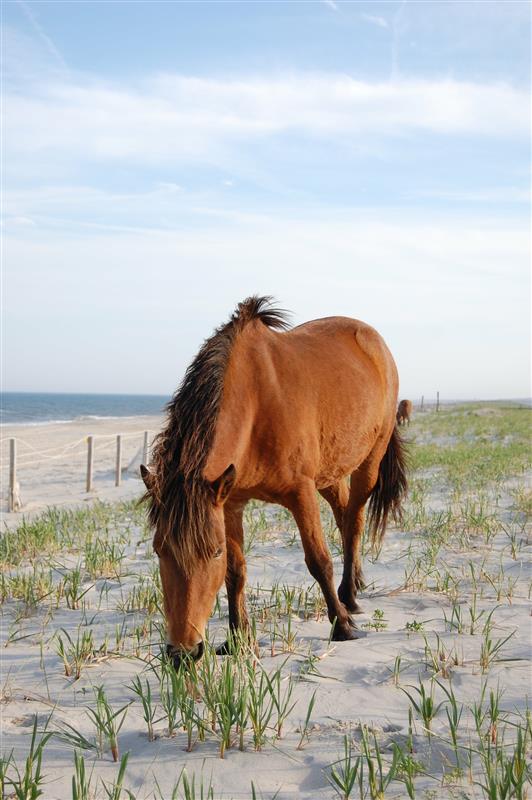
6 Things You May Not Know About Sand Colic
Colic is the most common medical ailment in the horse and, over the past 25 years there have been great strides in both horse colic treatment and prevention. Improvements in deworming products and schedules, equine dentistry, and management practices have helped to reduce the number of colic cases immensely. Advances in veterinary knowledge and the development of new drugs and surgical techniques have helped to improve the survival rate of horses suffering from colic.
However, even with these advances, the annual colic rate for horses is estimated to be between 10 and 11% and one of the risk factors that remains a problem in horses is sand colic.
HOW IT HAPPENS
Horses ingest sand either through grazing or eating hay or grain from the ground. Although sand colic is most prevalent in the western half of the United States, sand exists in small amounts in all soil or dirt. In fact, many soils not only contain sand but also contain silt and gravel.
To be removed in the feces, the silt, sand and gravel ingested must first travel through the complicated digestive system. One of the problems associated with this situation is that the sand and gravel and, to a lesser degree, the silt can produce irritation within the lining of the digestive system. Additionally, in certain situations, the sand can accumulate within the digestive system and the irritation can intensify. As sand accumulates, a combination of the irritant effects and the weight of the sand can lead to impaired motility, reduced absorption of nutrients (including water) and thus, digestive upset or colic.
Making the situation even more troubling is the fact that clearance of sand from the large colon, where most sand accumulates, requires good gastrointestinal motility. As sand begins to collect in the colon, this leads to a reduction in motility which can then cause the further accumulation of sand and gravel.
DIAGNOSIS
The signs of sand accumulation can include poor condition, difficulty in maintaining weight, diarrhea and colic. Since none of these conditions are unique to a sand accumulation problem, there are four methods for this diagnosis.
Fecal Flotation Test: The easiest of the methods, since most horse owners are capable of performing it themselves. To do this, feces are collected from the horse and added to a container with water. The water and feces are mixed so that any sand within the feces is suspended within the mixture and then allowed to settle to the bottom of the container. Once the sand has settled in the bottom of the container, the sand can be quantified. By design, this test will inform you whether or not your horse is passing sand through their digestive system but it will not tell you whether they are accumulating sand within it. So, although this test is used often, the results can be hard to interpret and should always be scrutinized.
Auscultation: Another method, which is most commonly performed by a
veterinarian, is to listen for sand in the colon. Utilizing their stethoscope, your veterinarian can listen to the contractions of the colon within the
abdomen and, under certain conditions, can actually hear the sound of sand moving
within the colon. When the veterinarian discovers this sound and diagnoses a
sand condition, the results are reliable. The problem is that this sound is not always present, even when there is sand within the colon. Still, the skilled ear of your veterinarian is always a good place to start.
Radiograph (x-ray): By radiographing the abdomen and diagnose the sand contents based upon the
radiograph results. Generally, equine abdominal radiographs must be performed in a
hospital or clinic as it takes a radiograph generator that is powerful enough to
penetrate the equine abdomen. Although this method is non-invasive, it is
inconvenient and cost-prohibitive for most. 
Exploratory Surgery: This method, although possibly the most reliable, is both invasive and expensive as
well as being impractical for many reasons. Exploratory abdominal surgery is usually only chosen when a horse is ill enough to undergo colic surgery to relieve symptoms.
MANAGEMENT
Sand colic can be a difficult and frustrating condition to manage, let alone diagnose properly. Management changes can be key in controlling symptoms and lessening progression. Things like, placing hay and grain in feeders instead of on the ground and/or using rubber mats in the feeding areas, can be helpful. However, in most cases, it's nearly impossible to completely cut out the ingestion of sand.
This is where Assure line of digestive supplements for horses comes in.
Choosing the right psyllium horse supplement to feed your horse is vitally important as not all are created equal. The Assure line of products from Arenus Animal Health has years of research backing it and even comes with the backing of our Colic Assurance Program.
To learn more about psyllium in our Assure products and the helpful effects it can have on your horse's digestion, read:
Psyllium: Sand Clearance or Equine Superfood


